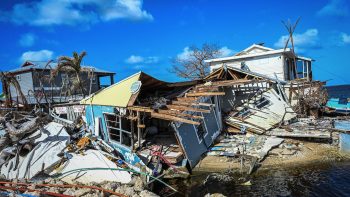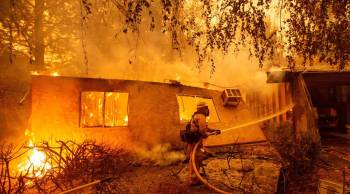
The role of catastrophe bonds in paying to rebuild after fires and other disasters
The role of catastrophe bonds in paying to rebuild after fires and other disasters

The increase in costly climate-related disasters has fueled the growth of so-called catastrophe bonds in the past few years. These are bonds issued by insurance and reinsurance companies — and sometimes governments — to help cover losses in the event of a major disaster.
They play an important role in keeping the insurance market functioning at a time when it’s getting harder for homeowners to get affordable coverage. But what happens when a catastrophe actually strikes?
The catastrophe bond market has been booming, with a new high of more than $17 billion in bonds issued last year, and average returns of around 14%.
“Yes, investors have done fairly well over the last couple of years,” said Chris Grimes, who follows the catastrophe bond market at Fitch Ratings.
The way catastrophe bonds work, he said, is that an insurance company only gets the money if a specific type of catastrophe happens and losses exceed a certain threshold.
If that doesn’t happen? Investors get their money back, plus interest.
And though there were plenty of disasters in 2024 — winter storms, flooding, hurricanes — “the types of risks that are insured by cat bonds tend to be fairly risk-remote, meaning that a very large event typically would need to happen to trigger losses to investors,” Grimes said.
A large event, like the LA fires? Not necessarily.
Of the $50 billion in catastrophe bonds outstanding, globally, “approximately 12% of that has exposure to wildfires,” said Robert Hartwig, a professor of finance, risk management and insurance at the University of South Carolina.
And a lot of that is in bonds that cover multiple perils that are only triggered if aggregate losses reached a certain amount.
But Hartwig pointed out it’s still early in the year: “And so if we have a severe tornado season, and if we have a severe hurricane season, at some point, it’s possible that the aggregation across all these events will trigger payout on the bond.”
After they’re issued, catastrophe bonds trade in a secondary market. And prices there have dipped for some bonds, Hartwig said — suggesting investors do expect some losses.
Carolyn Kousky researches climate risk management at Environmental Defense Fund and said that catastrophe bonds can help stabilize the troubled property insurance market by spreading risk from insurance companies to investors, like pension funds and hedge funds.
But if investors lose money, they’ll likely charge more to take the risk. “As it’s likely to get more expensive, as risks continue to increase from climate changes, then it’s not going to really help us with affordability problems,” she said.
That’s going to take some hard decisions about who should bear the cost of climate risk and dramatic investment to reduce it, Kousky added.
There’s a lot happening in the world. Through it all, Marketplace is here for you.
You rely on Marketplace to break down the world’s events and tell you how it affects you in a fact-based, approachable way. We rely on your financial support to keep making that possible.
Your donation today powers the independent journalism that you rely on. For just $5/month, you can help sustain Marketplace so we can keep reporting on the things that matter to you.
















